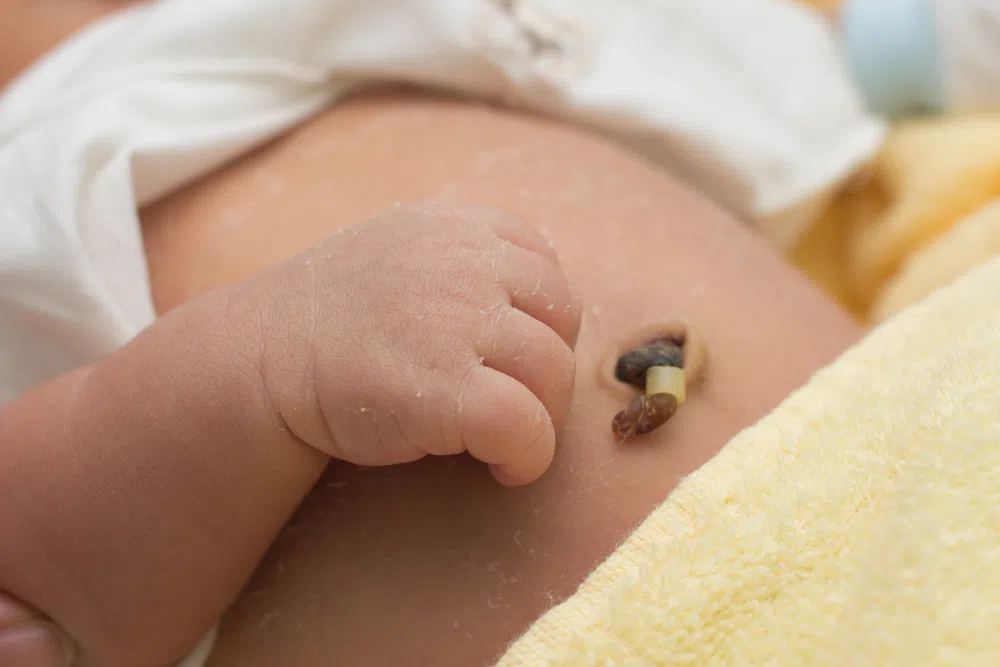
Content Reviewed by:
Dov Apfel
Content Reviewed by: Dov Apfel
Since 1979, Dov Apfel has been passionate about advocating for birth injury and medical malpractice victims. Mr. Apfel’s career-long record of achievements in birth injury litigation, education, and advocacy has been recognized by the Executive Board of the Birth Trauma Litigation Group of the American Association for Justice. His expertise is demonstrated by his numerous awards, presentations on birth injury topics at legal conferences for organizations like the AAJ and ATLA, and articles published by Trial Magazine and many others.
During pregnancy, the umbilical cord attaches on or around the center of the placenta. This vital organ helps provide oxygen and nutrients to a growing fetus. In some cases, however, the umbilical cord may attach at the wrong place—on the side of the placenta, rather than in the middle.
Marginal cord insertion, also known as battledore cord insertion, battledore placenta, or marginal umbilical cord insertion, can cause problems for expecting mothers and their babies. The sides of the placenta are not as strong as the central area, which means they cannot provide the same level of support to the umbilical cord. Marginal cord insertion can lead to the restriction or reduction of blood flow to the fetus, increasing the risk of developmental challenges and birth injuries. Marginal cord insertion occurs, on average, in 7% of pregnancies.
Signs and Symptoms of Marginal Cord Insertion
In many cases of marginal cord insertion, a pregnant woman will not notice any obvious problems. It can often go unnoticed until a routine prenatal scan. During an ultrasound, care providers can identify issues like slowed fetal development or apparent intrauterine growth restriction.
Symptoms, when they do arise, may include:
- Blood vessel compression
- Excessive bleeding when giving birth
- Decreased blood flow to the fetus, which can result in decreased fetal development
Who is most at risk of having a marginal cord insertion?
Multiple gestations (twins, triplets, etc.) present a much more significant risk of marginal cord insertion than singleton pregnancies. Researchers are not entirely sure about the cause of marginal cord insertion, but studies suggest that it may occur due to abnormal development of placental tissue during pregnancy. Risk factors can include:
- Advanced maternal age
- Female fetuses
- Maternal chronic illness
- Pregnancies with anomalous cord insertion
Possible Complications of Marginal Cord Insertion
While marginal cord insertion is relatively common, it can bring with it many potential complications. It’s important for doctors to monitor this condition carefully and treat it promptly.
Issues that can arise include:
- Preterm Birth: In many cases, patients with marginal cord insertion will deliver earlier in the pregnancy. Preterm birth can cause complications, as preterm infants may need extra support.
- Low Birth Weight: Marginal cord insertion can lead to slowed fetal development or growth, which can lead to lower birth weight. Low birth weight infants may require additional support after birth, including help with feeding.
- Greater Odds of Pregnancy Loss: Some studies suggest that marginal cord insertion can lead to a greater risk of spontaneous abortion of the pregnancy, usually during the first or second trimester.
- Fetal Distress: Marginal cord insertion can lead to overall reduced blood flow, which can cause fetal distress. This can include changes in the baby’s heart rate or decreased fetal movement. Fetal distress sometimes necessitates immediate delivery.
- Vasa Previa: In extreme cases, when the marginal insertion occurs near the cervix, it can rupture during early labor, potentially leading to stillbirth. Careful monitoring of the pregnancy and, in some cases, a C-section can help decrease the risk of vasa previa and protect both mother and child. Vasa previa is more likely with velamentous cord insertion, which occurs when blood vessels run through the amniotic sac instead of going directly from the placenta to the umbilical cord. Both vasa previa and velamentous cord insertion are serious conditions.
- Excessive Bleeding During Childbirth: Blood vessels might rupture during delivery, leading to an increased risk of placental abruption. Increased bleeding during childbirth can cause hazards for both mother and baby, including increased risk of death or stillbirth.
After a marginal cord insertion diagnosis, doctors will carefully monitor both mother and baby. The mother may need to go through more regular screenings. In some cases, including cases of velamentous cord insertion, doctors may recommend a Cesarean delivery rather than vaginal delivery to protect the lives and health of both mother and child.
Can marginal cord insertion cause birth defects?
Any problem with the umbilical cord or placenta, including marginal cord insertion, can lead to fetal growth and development problems. This can ultimately lead to some types of birth defects, including low birth weight. Additionally, marginal cord insertion can also cause a child to be born at a low gestational age, which can increase risks to the baby’s health. Preterm infants may have breathing, heart, and brain issues, among other problems.
Marginal cord insertion can also lead to an increased risk of cerebral palsy, which often occurs due to oxygen deprivation during pregnancy or birth. Cerebral palsy impacts muscle tone, balance, and posture. A child with cerebral palsy might need help walking or might not be able to walk at all.
Marginal Cord Insertion Diagnosis
Doctors usually diagnose marginal cord insertion during routine scans performed via ultrasound. The ultrasound technician can see the flow of blood through the umbilical cord from the placenta and should recognize if something is wrong. Doctors can then develop a treatment plan.
After a doctor diagnoses marginal cord insertion, they should carefully monitor the pregnancy to ensure that velamentous insertion does not develop and that the fetus does not suffer distress due to decreased blood flow or blood vessel compression. Healthcare providers will also monitor for delays in growth. Complications can develop at any point during pregnancy, and quick intervention may help decrease many of the risks.
Sometimes, parents may notice issues immediately after their child’s birth, particularly if their doctor did not recommend the right interventions. Other times, families do not notice symptoms until the child is several months old.
Possible Treatment Options for Marginal Cord Insertion
No treatment can fully correct a marginal cord insertion. However, many healthcare providers will recommend that pregnant women with this condition take specific steps to help protect the pregnancy. These may include:
- Increased Scans and Tests: Doctors may want to monitor marginal cord insertions more carefully to ensure that further complications do not develop.
- Early Delivery: While preterm birth can bring some potential complications, it can prove beneficial to deliver the infant early in cases of growth restriction and other serious complications.
- C-Section: Doctors may recommend a C-section delivery to protect the health of both mother and child. This is because marginal insertion can increase the risk of heavy bleeding or stillbirth.
Can Marginal Cord Insertion Correct Itself?
In some cases, marginal cord insertion may correct itself. The placenta can expand in a different direction than anticipated, causing the cord to shift over time. As a result, many women go on to have healthy pregnancies. However, doctors should continue to monitor the pregnancy carefully, keeping an eye on the baby’s size and growth.
When to Take Legal Action for Marginal Cord Insertion
Your care provider cannot cause or prevent marginal cord insertion, and no treatment can change marginal cord insertion once it occurs. However, in some cases, you may want to take legal action against your care team for failing to take action.
Failure to Diagnose
Looking back at your ultrasound photos after delivery, you might find that they show marginal cord insertion, but your doctor failed to diagnose you properly. As a result, your child may have suffered growth delays, birth defects, or even death due to your doctor’s negligence.
Failure to Monitor and Treat
Once your doctor diagnoses marginal cord insertion, they should monitor you carefully to decrease the odds that you will develop serious complications unexpectedly. If your doctor fails in their duty to monitor your pregnancy’s progression, it can lead to serious consequences for your child. During pregnancy, your child may suffer from distress or delayed growth, increasing the risk of challenges after birth.
If your doctor does not monitor you properly during delivery or fails to perform a C-section if needed, you might risk heavy bleeding or stillbirth. Your baby may also have an increased risk of developing cerebral palsy or another serious birth injury due to decreased oxygen during delivery. If you or your child suffer medical consequences due to your doctor’s failure to provide prompt treatment, you may have the right to compensation.
How Levin & Perconti Birth Injury Lawyers Can Help
If your family suffered damage from marginal cord insertion because a doctor failed to provide the standard of treatment you needed, Levin & Perconti may be able to help. We have a history of success helping birth injury victims recover the compensation their families deserve, including:
- \$20 million verdict for a child who suffered a brain injury due to the negligence of nurses and residents during labor.
- $16 million settlement for a child who suffered a brain injury due to negligent nursing and medical care during labor and cesarean section.
- $14 million verdict for a child who suffered a brain injury due to lack of oxygen during birth.
- $11.5 million settlement for a child with hypoxic-ischemic brain injury.
- $9 million settlement for a baby who suffered permanent brain damage as a result of a doctor’s failure to test the mother for Group B Strep Meningitis during prenatal care.
- $6.5 million for a newborn brain injury due to a lack of competent medical professionals during a neonatal resuscitation.
If you believe you might have grounds for a birth injury claim due to poorly managed marginal cord insertion, contact us today to learn more about how we can help.



